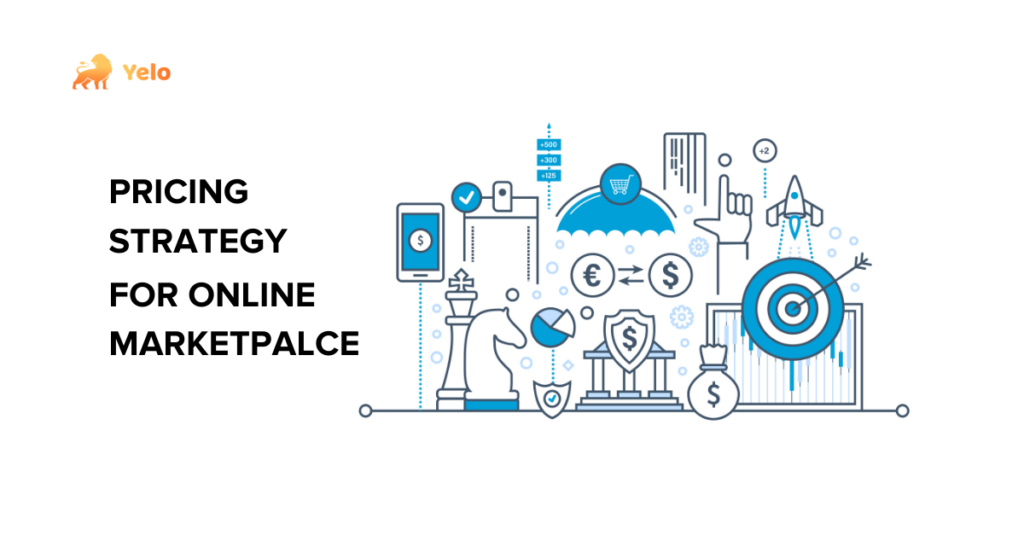

One of the most significant factors to consider before building a sustainable online marketplace platform is the Online Marketplace pricing. Certainly, the pricing model of an online marketplace determines its success rate, generates better traction and helps both sellers and customers turn a profit, thus resulting in better business.
But in order for you to reach there, you need to constantly change your pricing model as you create new milestones.
The more your business evolves, the better the profit margin gets, and that’s exactly what the pricing model is for. The right price keeps everyone in the business happy, right from the marketplace administrators, who have to eventually keep the operations running, to merchants and customers who are the key influencers of your platform.
Remember, a well-laid pricing strategy is everything that the sellers and customers look for these days, so pricing is the key for you to stay ahead of the intense competition.
In this guide, we will walk you through everything that you need to know about the marketplace pricing models, right from the different types to how you can pick the right business model for your business.
Different Online Marketplace Pricing Models
1. Commission
Commission is one of the easiest and most commonly followed pricing strategies. Most online marketplace platforms that have now established a strong foothold in the markets charge a commission from each transaction.
This commission is either charged as a percentage of the total transaction price or a minimum fixed free. You can also add tier-wise commission for orders that fall under a certain price range, which means default commission rates apply to each order.
This is one of the most lucrative pricing models for the marketplace platforms, as this way marketplace administrators get a piece of every transaction on the platform. However, the commission rates should be feasible for both merchants and customers and should only be raised once the conversion rate increases.
2. Subscription
Another prominent pricing strategy in the marketplace business is a subscription, where marketplace platforms charge a monthly/yearly subscription based on different business profiles or stages.
Amazon Prime, LinkedIn, Airbnb are some of the best examples in this domain. A membership fee can be a viable business model if you’re just starting. It’s a great way to make revenue even before the actual selling begins. However, the subscription rates should not exceed the competition’s subscription model initially.
3. Listings
Some platforms charge a fee on the number of product listings from clients, like Craigslist or Etsy. This pricing model is preferable in cases where providers don’t want a continuous subscription but only want to sell certain items.
The challenge with the listings fee model is that it captures a very small proportion of the value going through the site, therefore, to sustain, businesses require a very large volume of listings.
4. Featured Listings and Ads
Featured listings and ads is another way of generating revenue from providers who wish to increase the visibility of their offerings on your platform. This can either be done by pulling the listings to the homepage or by running ads.
Again, the challenge with this model is that it requires a significant amount of users and ads are generally perceived as a hindrance to the user experience. Therefore, if the customer experience is in your priority list, then this pricing model is not the best option.
5. Freemium
Freemium is the collaboration of both free and premium services as the term suggests. The logic behind the freemium model is that the core services are free, however, after gaining some good amount of traction, the platform offers paid value-adding features.
For this to happen, the core offerings need to be of high significance to the merchants and customers, otherwise tempting them into using premium services might be challenging.
How to Select the Right Business Model?
Now that we’re acquainted with different kinds of business models used in the marketplace business, the next big question is, what’s the right pricing strategy for our business? And how to create the best online marketplace platform? So here’s the thing. The pricing strategy that works best right now might need an upgrade in the months or years to follow, therefore actively monitoring the business cycle to make these changes must be on your priority list.
This is also important to maximise profits and bring new trends. For instance, in the launch phase, you need a pricing strategy that attracts both merchants and customers on the same level and brings value in the long run. As the business becomes more stable, you can start looking for an upgrade because the users and merchants will now be at a better position to compromise on the price factor based on their good experience and higher returns.
And once the marketplace is at its peak and you’ve established a loyal customer base, you can think about a price hike, however, in order to do this, the marketplace administrator must closely monitor the competition, the new trends and evolving business requirements.
While every business model comes with its own set of perks and challenges, the commission-based model has received great traction over the years and is highly profitable for marketplaces.
But deciding how much to charge depends on several external factors, which we will discuss next.
Key influencers in selecting the right pricing strategy
1. Marginal Cost
Charging a percentage amount on products or services that already have a low-profit margin is never a great idea. The marginal cost, therefore, is one of the most important determinants of the pricing strategy. Sellers usually don’t make a big profit on their sales, hence charging huge commission initially might make them consider options and reach out to your competition to market their products or services.
Some of the most prominent examples of this are the on-demand food industry or the e-commerce industry that are highly competitive. While the sellers of these industries usually live on the edge, charging a commission from their earnings on the site can get quite challenging. However, if you’re a marketplace that sells digital products or facilitates real-estate services, a suitable percentage commission will not be a problem.
2. Tough Market Competition
Well, you certainly don’t want to drive away your customers with a hefty commission, especially not when your competitors charge way less than you do. Market competition is the first thing that needs to be taken into consideration before setting a commission.
Customers appreciate valuable services and affordable pricing, and once they start turning a good profit, they won’t mind paying a little higher than usual. But this kind of loyalty demands time and consistency, which they know only a few platforms offer. Therefore, keeping a regular competition check when it comes to deciding your pricing model will benefit you when you build a marketplace platform for the long run.
3. Network Effect
Network effect is another factor that impacts your pricing strategy. Customers tend to prefer apps and sites with more options, therefore attracting more merchants to your platform will definitely increase your marketplace’s value.
Once you have a network this big, you will be in a position for a commission or subscription hike. However, the marketplace administrators must never go overboard with the number of providers as it creates a situation of choice overload, which drives away the customers.
4. Different Providers, Different Pricing
Not every provider capitalises on a multi-vendor marketplace platform, and so, it’s only unfair to have a similar pricing strategy for all kinds of providers. It’s possible to have some providers that make a good profit from the site while having others who are barely making anything.
Keeping both high and low performers into consideration before setting up the commission will help you build a marketplace platform that is unbiased. Charging high performers isn’t as big a deal as charging low performers who may not see enough value on the marketplace and eventually drop out.
Now, this depends on the kind of marketplace platform you are running. If you are administering a marketplace that covers different kinds of services and providers, you might want to consider a price that fits all or create better opportunities for low performing providers.
5. Horizontal vs Vertical Marketplaces
The pricing strategy also varies with the kind of marketplace platform you’re operating on. If you operate a horizontal marketplace that meets a wide range of customer needs across different sectors, the pricing must vary based on the product categories and seller type. However, if you operate a vertical marketplace to only offer goods and services to a specific industry, then you may have to consider fixing prices.
5 Step Guide to the Ultimate Pricing Strategy
In addition to the above-listed factors, a viable pricing model is the one that understands both the market and business requirements. It is good to analyse the markets in order to understand what others are doing, but it is equally important to understand who to charge and by how much. This depends on how closely you’ve observed your customers and providers. So here’s a 5 step guide to the ultimate pricing strategy.
- Write down your business goals.
- Conduct a market pricing analysis.
- Analyse your customers, understand their requirements.
- Profile the competition pricing strategy.
- Find a marketplace building software that fits your pricing model requirements.
To build the best online marketplace platform, it is of utmost importance to streamline your pricing model since that will ultimately be your survival plan. So after finding a suitable online marketplace builder such as Yelo that qualifies all your pricing requirements and executing the plan, you must closely monitor the results. The pricing must be continuously changed based on many external factors, and that’s the key to an efficient online marketplace business.
So, if you still have questions about how to set the right pricing strategy, the Yelo team is up for all sorts of questions. Plus the free 14-day trial will give you some great practical insights.
Subscribe to stay ahead with the latest updates and entrepreneurial insights!

Subscribe to our newsletter
Get access to the latest industry & product insights.




























